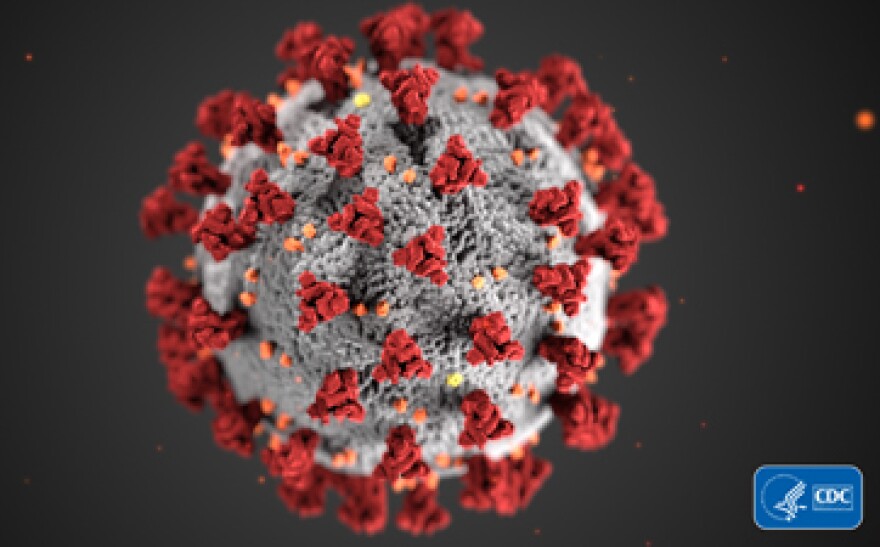TOPEKA — Kansas no longer has any counties free of reported coronavirus cases, with the last two, sparsely populated ones confirming their first as local schools were preparing to reopen.
The state Department of Health and Environment on Monday marked the milestone while reporting 1,545 new cases since Friday, an increase of 4.2%, to put pandemic total at 38,401. The state reported an additional seven COVID-19-related deaths, for 426 in all.
The last two of 105 counties to report cases were in northwest Kansas. Rawlins County is on the Nebraska border and has about 2,500 residents, while Wallace County has about 1,500 residents and is on the Colorado border. Their biggest towns are at least 100 miles (161 kilometers) closer to Denver than to the Kansas capital of Topeka.
The pandemic reached Kansas in March, with the first cases in the Kansas City area, and the virus spread to half of the state’s counties in 30 days. Rawlins and Wallace counties remained the only two without a reported case for a little more than a month, but Aften Gardner, administrator of the Wallace County Health Department, said the virus has been "closing in." Both counties confirmed their cases late last week.
"It’s kind of been circling the drain for a while," Gardner said. "I don’t think people were very surprised."
Kelly called having reported cases in all 105 counties "an unfortunate milestone" following "a bad weekend."
"The virus does not know borders, obviously," Kelly said during a Statehouse news conference. "This is evidence of that."
Kansas has no statewide mask mandate or statewide restrictions on businesses and gatherings, thanks to a Republican-controlled Legislature pushing successfully to have local officials make such decisions.
Kelly, a Democrat, was rebuffed when she proposed pushing the reopening of K-12 schools from mid- or late August until after Labor Day. Some urban and suburban districts have and moved classes online for many students.
But the Wallace County school district began classes for its 205 students Monday, with almost all of them opting for in-person classes. Superintendent Bruce Bolen said each classroom has a touch-less sanitizer dispenser.
The district bought two reusable masks for every student and staff member and can wash them daily — though only half a dozen elementary school students are wearing them throughout the day.
Fall sports are on, but the district doesn’t plan to charge admission or have concessions to avoid people bunching up in lines, Bolen said.
"People are actually very excited and very happy to be back," Bolen said. "Kids want to be back with their activities, with their friends."
The Rawlins County district planned to start classes Tuesday, with daily temperature checks for its 350 students and partitions at tables to divide students. Superintendent Eric Stoddard said small class sizes generally allow for social distancing.
"We want school as normal as possible and as long as we can," Stoddard said.
Gardner and Suzanna Koel, the spokeswoman for the Rawlins County Health Center, a 13-bed hospital in Atwood, said the normal social distancing of rural life probably helped their counties avoid reported cases for so long.
There’s also been relatively low testing in some rural parts of the state, and the number of people tested in Rawlins and Wallace counties is a fraction of the state’s rate of 133 people tested for every 1,000 residents. Testing has focused on people with symptoms or those in contact with potentially infected people.
Koel said many Rawlins County residents work in Colby, a town of about 5,400 people to the south. It is in Thomas County, which has 50 reported coronavirus cases.
"We pretty much knew it would come at some point," Koel said of the virus.
Kiera Goodwin, who travels between her home in Wallace, with about 60 residents, to jobs in other towns as a waitress and classroom assistant, said she knows at least three people who are potential coronavirus contacts and have started wearing masks. Still, she said Wallace County’s health department has kept residents aware of COVID-19 and provided guidance for avoiding it.
"Most people are just like ‘'Okay, if that’s what you say, we trust you and that’s what we'll do,'" she said. "We live in a very 'go with the flow' kind of town."




